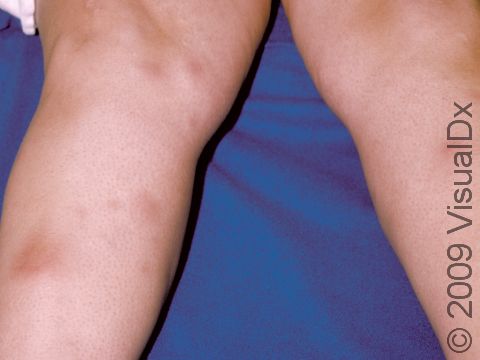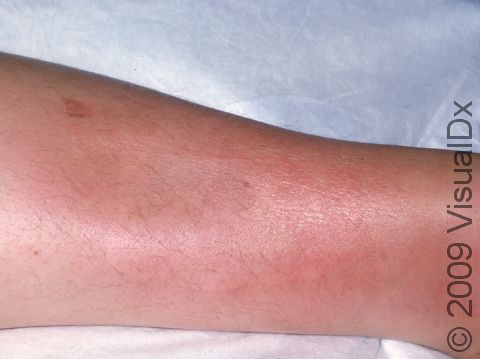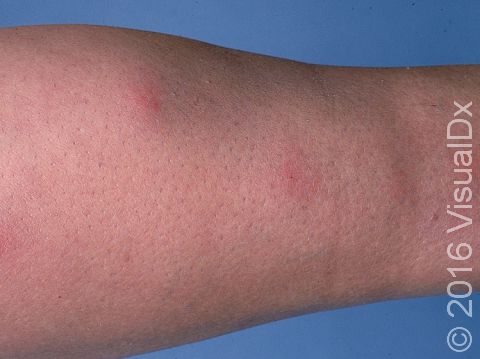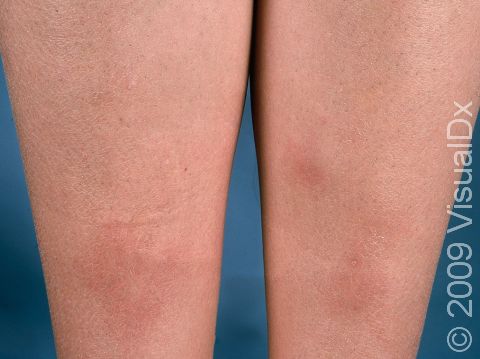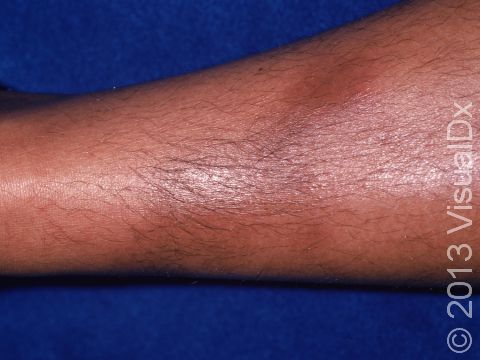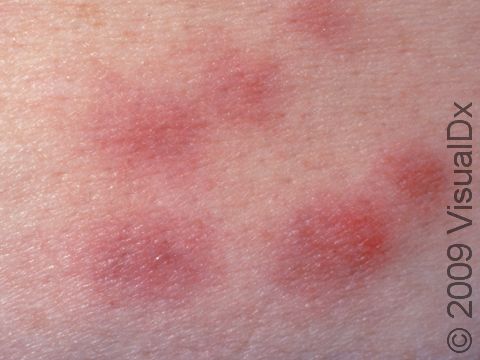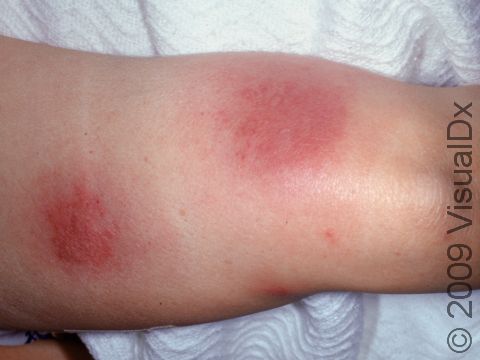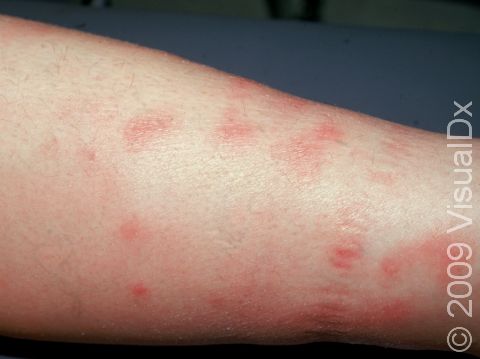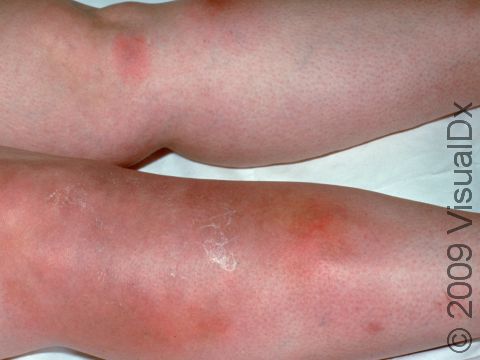Erythema Nodosum
Erythema nodosum is a skin condition characterized by the sudden eruption of tender, red bumps, particularly on the shins. It represents inflammation of the deeper portions of the skin (the adipose tissue, or fatty layer of skin). Erythema nodosum often occurs as an isolated skin finding, or it may be associated with certain medications, infections, or underlying medical conditions.
Who's At Risk?
Erythema nodosum can develop in persons of any age, sex, and ethnicity. Young adults are particularly susceptible to developing erythema nodosum. Moreover, women are 4 times more likely than men to be affected.
Approximately 30–50% of cases of erythema nodosum have no underlying cause. However, an associated medication, infection, or health condition may be found in the remainder of cases.
Erythema nodosum may develop in people on these medications:
- Birth control pills
- Estrogen pills
- Antibiotics (such as sulfonamides or penicillin)
Erythema nodosum may occur in persons with one of the following infections:
- Streptococcal infections (such as strep throat)
- Intestinal infections
- Tuberculosis
- Pneumonia (viral or bacterial)
- Fungal infections (such as coccidioidomycosis or histoplasmosis)
Erythema nodosum may be seen in individuals with one of these underlying medical conditions:
- Pregnancy
- Inflammatory bowel disease (ulcerative colitis or Crohn’s disease)
- Sarcoidosis
- Lymphoma or leukemia
Signs & Symptoms
The most common locations for erythema nodosum include:
- Shins
- Knees, ankles, or thighs
- Forearms
- Face and neck
Erythema nodosum appears as one or more reddish, warm, and painful lumps or nodules, ranging in size from 1–10 cm.
The onset of erythema nodosum may be associated with fever, generalized achiness, leg swelling, or joint pain.
Individual nodules of erythema nodosum usually last from 1–2 weeks, but new lesions may continue to appear for up to 6 weeks. When an individual lesion of erythema nodosum has resolved, it may leave behind a temporary bruise, which subsequently fades to normal-appearing skin.
Self-Care Guidelines
Although erythema nodosum may occur on its own, it is more often associated with a medication or with an underlying infection or medical condition. Therefore, it is important to see a physician in order to investigate any possible health problems. In the meantime, however, the tenderness of the skin lesions may be alleviated by the following:
- Restriction of physical activity or bed rest
- Elevation of the legs (if they are affected)
- Cool or warm compresses
Generally, people with erythema nodosum do quite well, especially once any underlying medical condition has been treated.
Treatments
After diagnosing you with erythema nodosum, your physician will attempt to identify a possible cause, such as medication, infection, or medical condition. The doctor may order diagnostic tests such as blood work, chest X-ray, or throat culture. If an underlying cause is identified, then the physician will treat it appropriately (for example, by discontinuing a medication, prescribing antibiotics for an infection, or treating a health problem).
Once those investigations and treatments are under way, your health care provider may try the following measures to make you more comfortable:
- Restriction of physical activity or bed rest
- Anti-inflammatory medications such as ibuprofen or aspirin
- Potassium iodide
- Steroids (either taken in pill form or injected directly into the lesions)
Visit Urgency
Since erythema nodosum can be associated with underlying infections or health problems, a physician should be consulted within a few days of noticing the skin lesions.
Trusted Links
References
Bolognia, Jean L., ed. Dermatology, pp.724, 1455, 1552-1555. New York: Mosby, 2003.
Freedberg, Irwin M., ed. Fitzpatrick’s Dermatology in General Medicine. 6th ed, pp.1056, 1059, 1849, 1934, 1944. New York: McGraw-Hill, 2003.
Last modified on October 5th, 2022 at 7:22 pm

Not sure what to look for?
Try our new Rash and Skin Condition Finder
